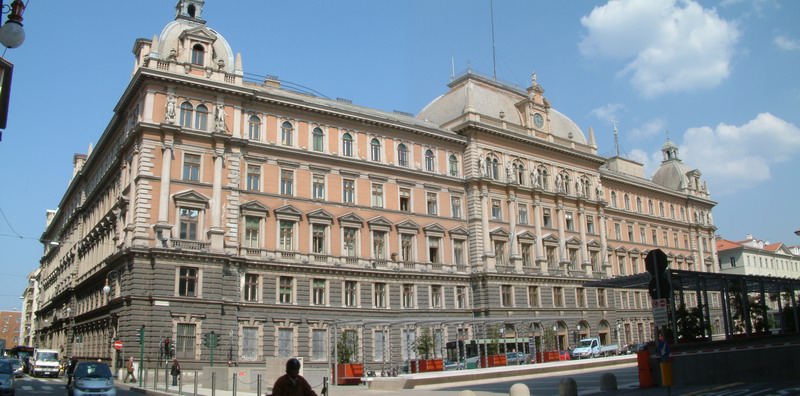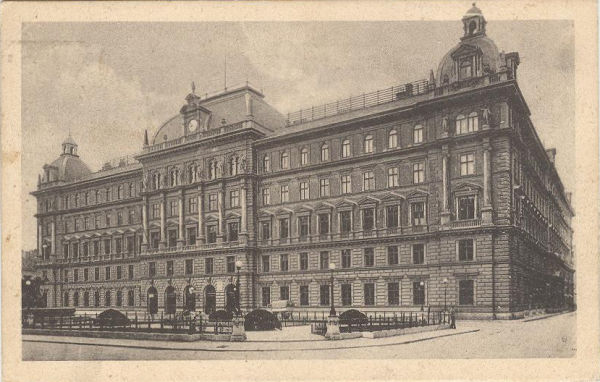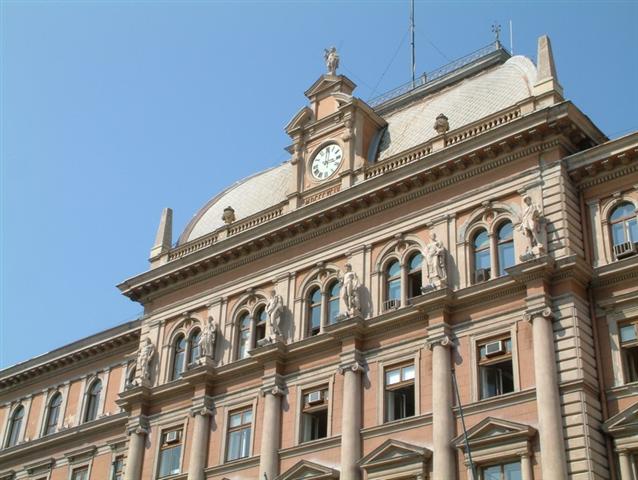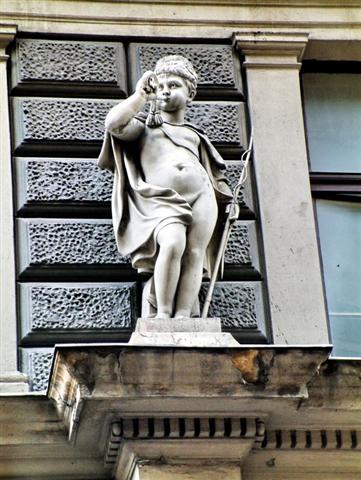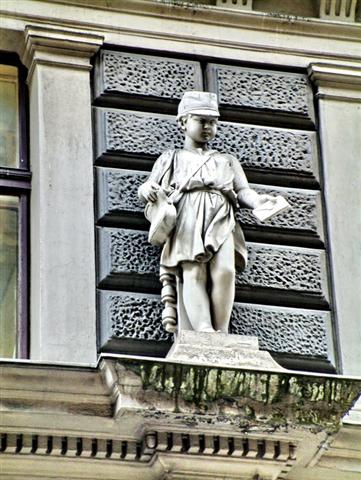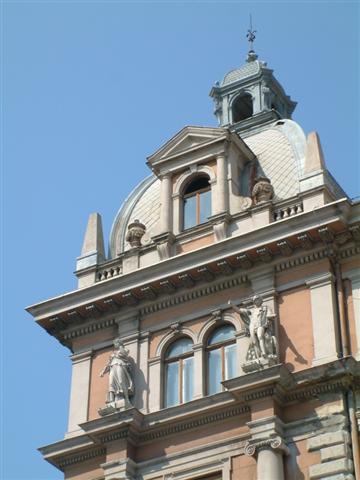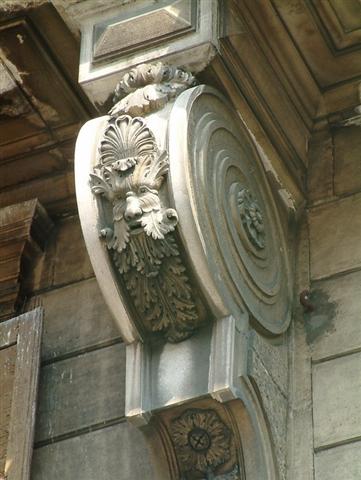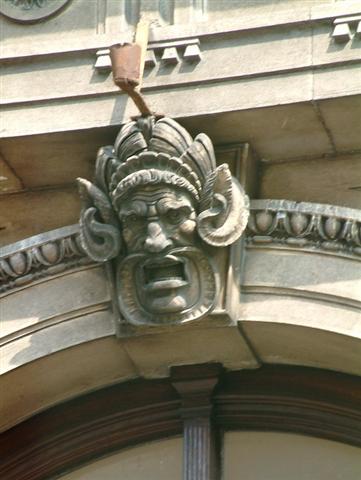Palazzo delle Poste (1890 - 1894)
piazza Vittorio Veneto 1
Arch. Friedrich Setz
It was not possible, in such a global project, not to also foresee the presence of a new building for postal communications designed with modern criteria, which constituted a fundamental element for public needs and businesses. The old site, located near the Grand Canal, was no longer in keeping with the new needs of the time. The presence of the i.r. In fact, Posta had allowed anyone, since its inception, to send any object, starting from a simple message to get to the bulkier packages, reducing transport costs. In fact, before the presence of such an institution, only the wealthiest, that is, those who could afford to send a courier or travel to the post office totally at their own expense, had the opportunity to send objects over long distances. The post offices had also taken on a different function from the simple posting; In fact, institutions with purely banking purposes for money orders, checks and collection mandates had also been formed within the same.
Within the same real savings banks had been opened. Through these branches, aimed primarily at small savers, it was possible to buy, keep and resell annuities and collect the related interests. They were considered real "popular banks".
Thus the Post Office building was erected, located in the current Piazza Vittorio Veneto, which was completed in the summer of 1894, after four years of work. However, the inauguration took place only a few months later, due to the complexity of the set-ups necessary for carrying out the postal activity.
The offices necessary for the operation of the post office were located on the second floor, which is accessed via a staircase located at the bottom of the upper vestibule. This was where the Post Office and Telegraph Directorate, the accounting offices, the newspaper service and the official correspondence offices were placed.
On the third floor there were internal telegraph offices and on the fourth floor those of the telephone.
Two doors, on the left side of the building, lead to the office for setting up individual packages. When it was necessary to set a higher number of parcels and baggage, another office was used which was accessed from the courtyard located in via dello Squero Nuovo (now via Milano). This differentiation took place in order to facilitate and repair the wagons from the weather during the unloading phase. This office was used especially by shopkeepers and exporters.
At the entrance of via della Pesa (today via Galatti), packages subject to duty were welcomed.
Few people know that the six statues adorning its facade represent in order: Navigation, Railway, Commerce, Viticulture, Agriculture and Industry.
But those who arouse such tenderness are the "Postini Puttini". They are placed on the gables of the two side entrances of via Milano and via Galatti.
One has the typical cap of the Austro-Hungarian postal officers on his head; with the half-open shoulder bag he is immortalized in the act of delivering two letters, while the other plays the trumpet and holds the whip of the postillion.



